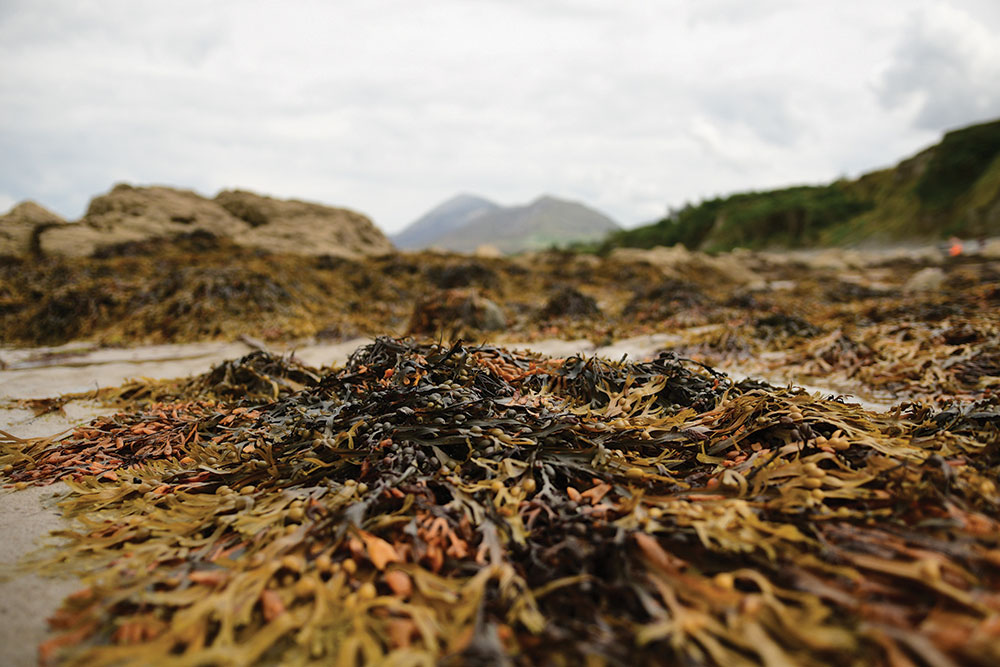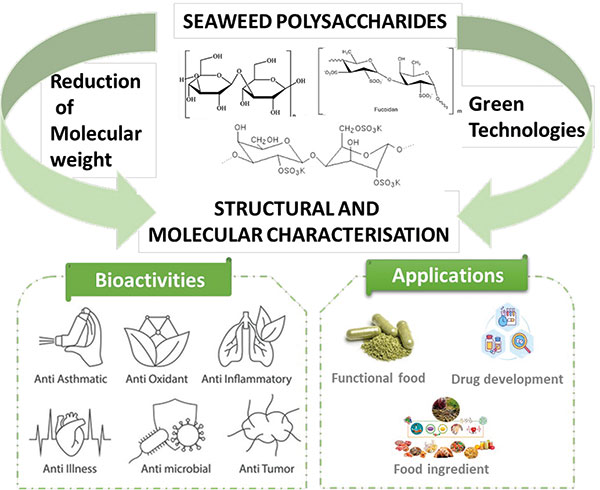01 March 2024
Vitamin “Sea”
As part of the SunMara project, Researchers from Teagasc and UCD are investigating polysaccharide-rich seaweeds and their potential benefits on the immune system.

For centuries, polysaccharide-rich seaweeds have been employed around the world for their dietary and medicinal benefits. Certain polysaccharides are attracting increasing scientific interest, due to their influence on immune system function, inflammation and cancer.
Brown seaweed, in particular, is rich in bioactive compounds, which are increasingly employed in pharmaceutical and cosmetic applications.
Extraction of these valuable compounds requires green and sustainable technologies. The objective of the SunMara project is to use a biorefinery approach to develop extraction processes for these products using clean, green and novel processing approaches focused on zero waste and reduced carbon emissions.
Shanmugapriya Karuppusamy, a Marie Słodowska-Curie Career-Fit PLUS Fellow at Teagasc Ashtown, explains: “Laminaria digitata brown seaweed is suitable for the production of bioactive functional ingredients of the highest quality and bioactivity. Brown seaweed is made up of polysaccharides, which several studies have shown have biofunctional proprieties. Seaweed polysaccharides have attracted strong research interest because the cell wall consists of various types of polysaccharide, polyphenol, protein, lipids, vitamins, etc.”
These functional compounds have been reported to possess various biofunctional properties and their potential use for therapeutic applications is an active research area.
Laminarin, a storage polysaccharide from brown algae, has been reported to have potential pharmacological properties, including antioxidant, anti-tumour, anti-coagulant, anti-cancer, immunomodulatory, anti-obesity, anti-diabetic, anti-inflammatory, wound healing, and neuro-protective.
Shanmugapriya explains further: “Marine-derived polysaccharides are considered as multifunctional supporting biomaterials that can interact with a specific receptor of the immune system for biological properties and immunomodulatory action. Laminarin enhances the immune system with a high accumulation of B cells and helper T cells. It also has anti-inflammatory potential by preventing proliferation of immune stimulatory molecules for cancer immunotherapy applications.”
Laminarin is both biodegradable and biocompatible. Due to its properties, it has been widely used as a multifunctional bioactive in biomedical applications. Laminarin is also an excellent source of dietary fibre and an immune modulator of intestinal metabolism and production of short-chain fatty acids. The current research indicates that lamarin has very high potential for biomedical and industrial applications, including nutraceutical, pharmaceutical, functional foods, drug development/delivery and cosmetics.

Seaweed polysaccharides with their reported properties and bioactivities
Did you know?
Laminarin is an excellent source of dietary fibre and a modulator of intestinal metabolism. Laminarin acts as an immunomodulator through its effect on intestinal pH and short-chain fatty acids production. Laminarin is reported to boost immune health, and treat and prevent diseases.
Acknowledgements
The authors wish to thank Technical Director Stephen Fitzpatrick and Scientific Director Henry Lyons of Nutramara, Ltd. for their contributions to this research.
Funding
This research was funded by Enterprise Ireland and the European Union Horizon 2020 Research and Innovation Programme under the Marie Skłodowska-Curie Career FIT PLUS grant agreement No. 68550 and project grant number MSCA20210184.
Contributors
Shanmugapriya Karuppusamy
Marie Słodowska-Curie Career-Fit PLUS Fellow,
Food Research Centre, Teagasc Ashtown.
shanmugapriya.karuppusamy@teagasc.ie
Brijesh Tiwari
Principal Research Officer,
Food Research Centre, Teagasc Ashtown.
Colm O’Donnell
Professor,
School of Biosystems and Food Engineering,
University College Dublin.
[pic credit] Simon Roughneen/istockphoto.com
